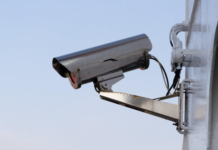
The pandemic has boosted the medical electronics semiconductor business which will total $6 billion in 2020, up from $5.6 billion in 2019 according to Omida, a research firm. To meet the higher demand of medical components, medical semiconductor manufacturers are working tirelessly. The manufacturing companies has changed their operations to make coronavirus medical supplies available on time.
Electro Bits shares the responses from leading medical electronics semiconductor manufacturers about their offering to the current situation, future outlook on the medical industry and how advancements in AI and connected devices are revolutionizing the medical electronics industry.
Medical Equipment/ products offering’s in the current pandemic situation
RECOM Power: RECOM has a wide portfolio of power supplies ranging from low to medium power range, off-board and on-board type DC/DC converter (1W to 30W) and off-board type AC/DC SMPS (18W to 550W). They are all medical grade with UL/EN/IEC60601-1 certification.
Because of the current pandemic situation, there is a sudden surge in demand for medical equipment like Ventilators, Patient monitoring & Multiparametric systems including ECG, blood pressure, oxygen saturation, respiratory rate, temperature, etc, Defibrillators, Diagnostic and Therapeutic equipment and even beds with electronic controls. At RECOM, we try our best to fulfil the demand for such medical grade products in times like that so as to continue to meet our customers’ medical equipment requirement.
Steven Dean, Director of Business Marketing for Signal Processing, Wireless, and Medical Division, ON Semiconductor: ON Semiconductor offers a broad portfolio of solutions for applications ranging from hearing aids to life critical applications, available not only during the pandemic situation, but at all times to the medical device manufacturing community.
As a recent example, we’ve been working confidentially with a customer that’s brought us an opportunity to help develop a body worn COVID-19 Detector. Our RSL10 Bluetooth® Low Energy radio offers them the kind of ultra-low power performance required for a wearable application such as this.
As the number of hospitalizations continue to rise due to COVID-19, the world’s inventory of infusion pumps and medical ventilators is being strained in unprecedented ways. To support the need, two new development areas for ON Semiconductor are system block diagram solutions now offered for Infusion Pumps and Medical Ventilators. These ‘virtual’ solutions are intended to help our customers select the proper components speeding their time to market.
Future of Medical Electronics in terms of business and technology?
RECOM Power: Medical Electronics equipment market is growing rapidly in the recent years, not only due to current COVID-19 situation, but also in view of the increasing global aging society in developed countries and some developing countries such as China.
RECOM have many global medical customers such as Siemens medical, Philips medical and GE healthcare, Omron, Olympus and many of others. In our continuous effort to meet our customers’ demand, RECOM has been investing heavily in the medical market to expand our medically certified product portfolio. New products developed are reduced in size, require lower power consumption, come with lower cost and achieve higher ambient temperature but, without compromising in safety and reliability of the products.
ON Semiconductor : The future is bright as ON Semiconductor has the appropriate products, technology, and intellectual property to serve this space, but perhaps even more importantly we have the business acumen to serve this space over the long haul. As an example, ON Semiconductor’s facility in Burlington, Ontario, Canada is FDA and ISO-13485 compliant, which is a totally unique offering in the competitive semiconductor space.
How AI and IoT are changing the medical electronics industry? Kindly mention any of the innovations/product/service under this?
RECOM Power: AI and IoT help make medical equipment smarter. For example, we are seeing implementations of autonomous disinfecting robots armed with UV lamps to aid disinfecting hospital rooms. Using the robots, it reduces risk of exposing cleaning staff to the virus as well as reducing time spent in disinfecting the room, down to 45mins from 2hrs.
In Korea, we have seen the new development of a COVID-19 Detection Platform using one of RECOM’s product by a Korean company. This detection platform helps reduces the virus’ detection time to only 1hr.
To further support the medical industry in developing medical electronics equipment, RECOM also ran a 2-months free medical sample program in April and May this year to aid engineers speed up their medical equipment design.
ON Semiconductor: The IoMT, or Internet of Medical Things, enables remote patient monitoring, and coupled with a new favorable reimbursement climate, remote patient monitoring is quickly becoming the ‘new normal’.

The reimbursement climate for doctors and caregivers has changed to encourage remote diagnosis. I’m grouping telemedicine with telehealth and remote patient monitoring for simplicity’s sake and discussion. Beyond the reimbursement climate change, there is a very real pivot taking place today that’s significant. There is customer ‘pull’ for telemedicine and remote patient monitoring now rather than a supplier ‘push’. It’s evident and as a proof point you can read more the article titled as” Fueled by the Covid-19 pandemic, remote heart monitoring could become tech’s next big target”. An excerpt from the article reads: “Staff from the cardiac division of Montefiore Hospital in New York, for example, reached out to iRhythm to request more Zio patches for Covid-19 patients who need remote monitoring and cardiac patients who they want to keep out of the hospital amid the pandemic.”
Challenges associated with medical equipment’s devices
RECOM Power: Challenges come mainly from more stringent compliance requirement on certification of UL/EN/IEC60601-1 on safety and EMC. The requirement of smaller footprint of products also poses challenges on cost reduction vs high-reliability demand.
At RECOM, we continuously invest in the newest technology and work closely with Top IC maker to design products that meet the Medical market’s future demand.
ON Semiconductor: ON Semiconductor helps solve customer challenges from a semiconductor technology perspective, providing power-efficient innovative solutions that go into medical equipment. For the end users of the medical equipment, both physicians and their patients, there are some challenges and concerns that arise in relation to telehealth and the technologies required for remote patient monitoring.
For example, when using ‘connected’ technologies such as weight scales, blood pressure cuffs, pulse oximeters, heart rate monitors or the like, security is a concern. Has the medical device manufacturer employed appropriate safeguards to protect the patient’s security? Is it possible for a hacker to gain access to the patient’s biometric data or worse personal health records? When using technology for remote patient monitoring, I recommend that the consumer of such technology make themselves aware of the safeguards that have been implemented by the medical device manufacturer to protect themselves against a potential hack.


















